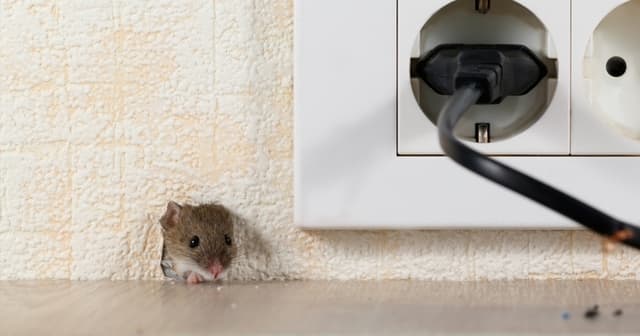Mice can get into homes through surprisingly small holes because they are so small and curious. To stop these unwanted guests, you need to know where they usually get in. In this blog post, we’ll look at some of the most common ways mice get into homes and talk about what you can do to keep these sneaky pests out.
- Holes around doors and windows: One of the most common ways mice get into homes is through holes around doors and windows. Weatherstripping can break down over time, leaving holes that mice can easily get through. To stop this from happening, check the weatherstripping and replace it as needed. You could also use door sweeps to close the gap under outdoor doors.
- Mice are good at climbing: so they can get into your house through vents or holes in the eaves. Make sure that all vents have screens or other covers that will keep pests out. Check your eaves for holes and fix them right away with the right materials.
- Utility spaces: Homes have different spaces for water, gas, and electric lines, among others. Mice can get in through these holes because there are often spaces around them. Close these holes with steel wool or glue to keep mice from getting in.
- Damaged siding and cracks on the outside: Mice can get into your home through damaged siding or cracks on the outside. Check the outside of your home often and fix any problems right away. Replacing broken walls and filling in cracks can do a lot to keep mice away.
- Roof vents and chimneys: Mice can also get in through roof vents and chimneys. To keep mice from getting in through these holes, put caps or covers on roof vents and think about getting a chimney cap.
- Pipes and plumbing: Mice can get into your home through very small holes, and pipes and plumbing are a way for them to get there. Check the areas around the lines and plumbing and use the right materials to fill any holes you find. Pay attention to the spaces around the drain pipes in your sink and bathtub, as these are frequent entry points.
- Garage Doors: Mice can get in through small holes on the sides or bottom of garage doors. Make sure your garage door fits well, and if there are any gaps at the bottom, you might want to add a garage door threshold.
- Crawlspaces and basements: Mice like to hang out in crawlspaces and basements. Check to see if there are any holes in the base or walls. If there are, fill them with cement or steel wool. Keep these places dry and well-ventilated so that mice won’t want to live there.
- Pet Doors: You might not believe it, but mice can also get in through pet doors, especially if they are not locked well. Make sure your pet door is set up right and closes tightly when it’s not being used.
- Firewood and messes: Mice are smart and can find secret ways to get inside. Mice can get into your home if you store firewood and other things against the outside of your house. Keep logs and other junk far away from your house.
Mice are hard to get rid of, and they can get into homes through many different openings. To keep these unwelcome visitors out, it’s important to check the outside of your home often and fix any problems right away. Sealing frequent entry points and keeping your home clean and well-ventilated can make it much less likely that mice will move in. Remember that the best way to stop these clever mice is to stop them from coming in the first place.
Offering high-quality, reliable, and affordable mouse control cobourg that are guaranteed to work to get rid of mice on your property.
